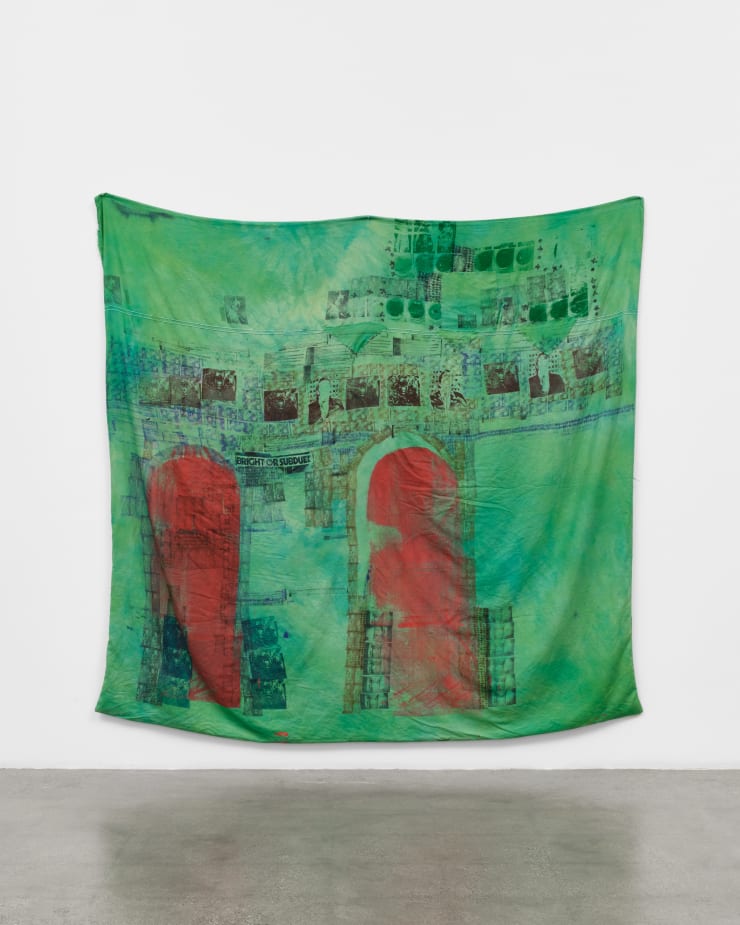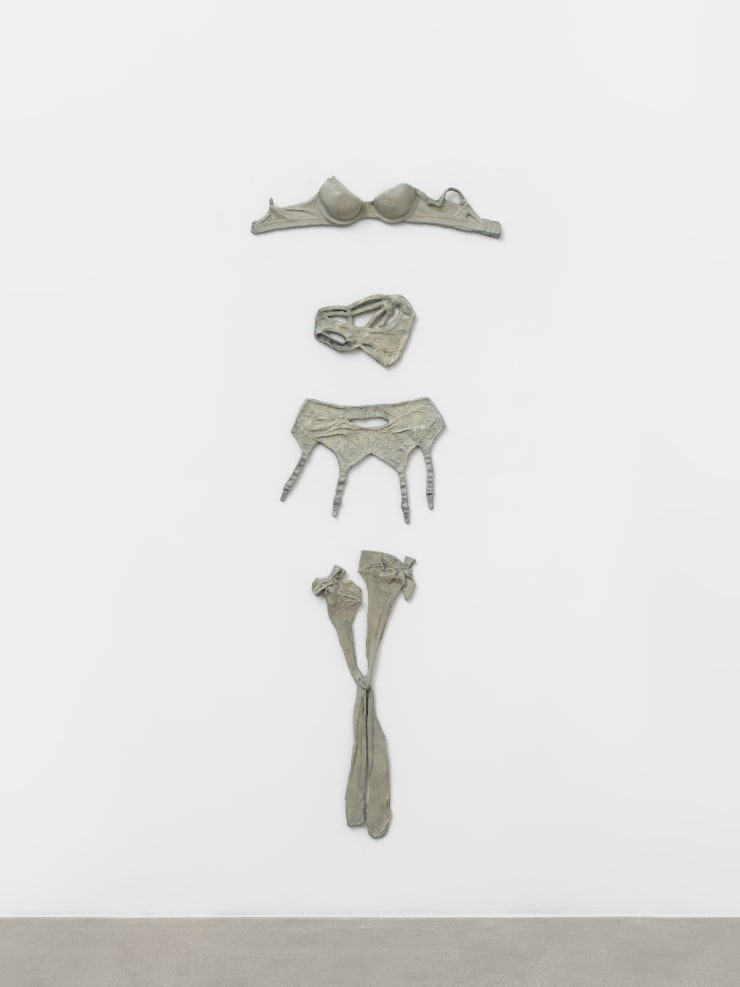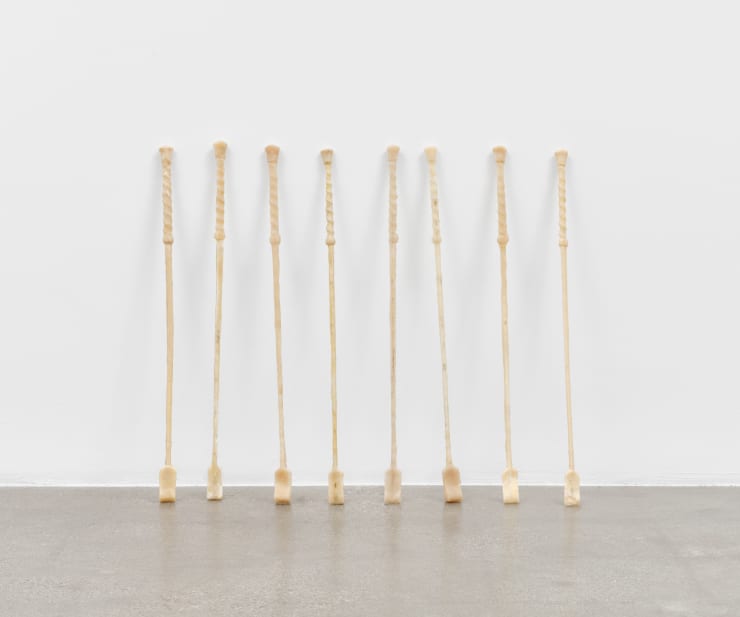Darya Diamond "Sugartown": Los Angeles
- Bruce Nauman
What do the priest, the prostitute and the artist have in common? If the first trades in faith and the second deals in fantasy, you could say the third is concerned with form. But in Sugartown, Darya Diamond’s second solo exhibition with Sebastian Gladstone, the artistic focus rests in the tension between form and formlessness. In this way, Diamond is akin to a psychopomp who comes to ferry us between realms, taking our hand in hers and leading us briefly into the denominationless divine.
Sugartown revisits the theme of sex work, a topic which has anchored Diamond’s practice in recent years. But here, the artist’s eyes are cast skyward. Sugartown is a liminal space: a lookout on the way from the corporeal to the celestial, a layover between sacred and profane.
This is work about work. Diamond questions labor’s (in)visibility, its transformative capacity, its relation to the body, and the body’s relation to the soul. To borrow a phrase from Camille Paglia, Sugartown “zaps with pornographic intensity,”2 generating electricity through the friction of opposing ideas and the confrontational clang of its imagery. There is an almost psychic pulse to the exhibition.
Diamond’s work is powerful yet precarious. It trembles in time with the seismic aftershocks of Postminimalists like Eva Hesse or Claes Oldenburg, for whom repetition and exaggeration were vehicles of the absurd. The hope of Hesse and her contemporaries was to shake the viewer from the ascetic detachment of Minimalism. For the Postminimalists, the artist became a mystic seer, and soft sculpture a surrogate for the human body.
Like an undertaker, Diamond examines and then peels back the skin, cleaving contents from their container. As such, we must consider the relationship of the work’s materiality (bedsheets, bronze, latex, glycerine) to the shapes printed on the surface or cast from the substrate. In the center of the gallery, a 9’ long treated latex inflatable (In every dream home a heartache) slumps on the floor like a God-sized prophylactic. Block prints are stamped repetitively on its face: a rose, lifted from a tattoo on the artist’s forearm, forming a bottom border; a series of thonged, peach-perfect bums landing a one-two punch round the crown.
These same motifs decorate the trio of bedsheets nailed to the west wall (14 Parkfield Road Locke at Broken Wharf Millennium Bridge, Kingsland Locke, London II). Many images are stills from a pornographic film Diamond once acted in. Others, Christian iconography. Eyes, asses, and orifices tessellate into the arms of a cross on the white cotton bedsheet; an inky crucifixion graces its upper left quadrant.
On the east wall, a set of bronze-cast lingerie (£1950, titled after the amount of money earned while wearing the original set) hangs on the wall like the crucifix’s temptress twin. There is a brazenly heretical note in the air, and Diamond waltzes along with it weightlessly, haunting Sugartown with the thought of the body, gesturing vaporously towards flesh that has gone to ground - or “dematerialized,” as Lucy Lippard prophesied3 the art object would in the late 20th century.
On the gallery’s far side, 8 riding crops cast in glycerine soap (CC Rider) lean against the wall. These objects play with the idea of fetish, remaking it into a hygienic agent. In the Christian tradition, we seek purification in the confessional. In the gallery, perhaps we sanitize by analyzing. And in the arena of sex work, Diamond suggests, cleansing is possible for both the client and the worker through mutual care.
If the triangle is Sugartown’s sacred geometry, it is an equilateral one. Hierarchy has no place here: for Diamond, the transactional intimacy of sex work carries the possibility not just of pleasure, but of sanctuary. When we go skin-to-skin, we may also go soul-to-soul.

















